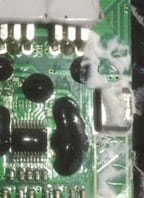dnmun
1 PW
the charge will stop when one cell reaches the HVC. so you just have to watch the cell voltages while it is charging and find the one that goes to HVC first and drain charge off of it.
do no measure the voltages from the back side of the sense wire plug. measure the voltage at the base of the pins soldered into the pcb. stick the probe in the solder where the pin sticks out the back side. it is not hard to keep them separate. that is why they have a sharp point. so it will stick in the solder.
do no measure the voltages from the back side of the sense wire plug. measure the voltage at the base of the pins soldered into the pcb. stick the probe in the solder where the pin sticks out the back side. it is not hard to keep them separate. that is why they have a sharp point. so it will stick in the solder.




